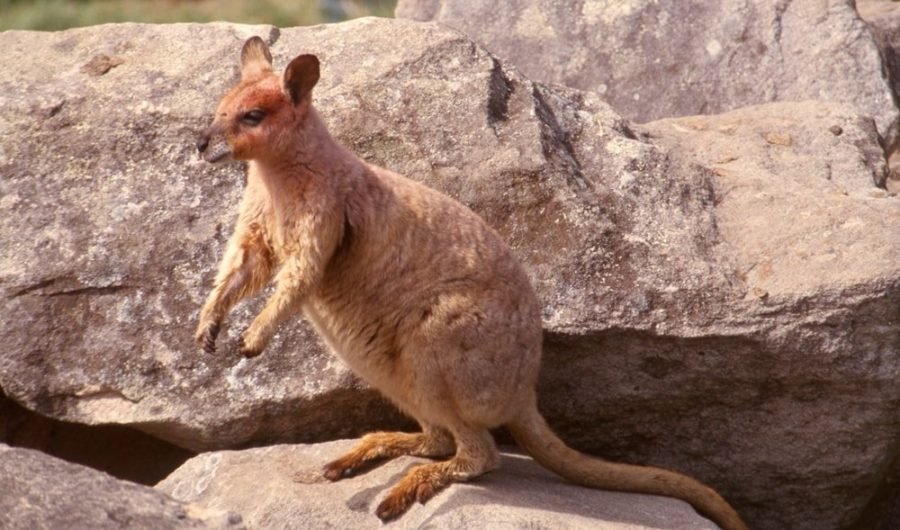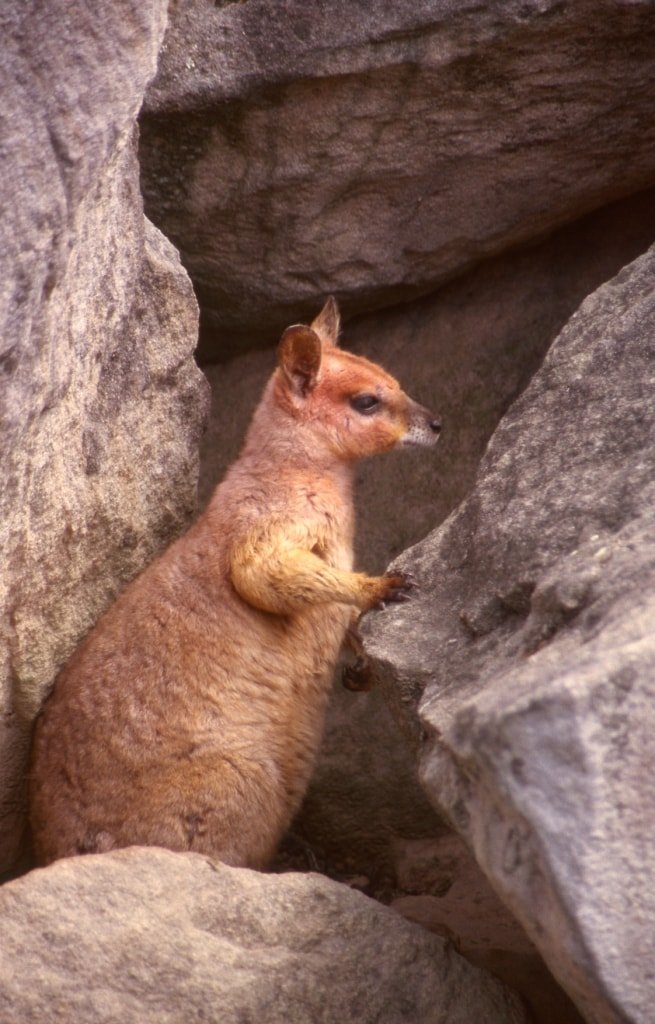The wallaby with a purple neck

YOU’VE PROBABLY never heard of a purple wallaby, but they certainly exist. Sporting a subtle pigment on their neck, the Petrogale purpureicollis or more commonly, the purple-necked rock-wallaby blends in with the lilac to grey stone escarpments of Mt Isa, northwest Queensland.
According to Mark Eldridge, the Principal Research Scientist of Terrestrial Vertebrates at the Australian Museum, for a long time after they were first discovered in 1924 by Albert Sherbourne Le Souef, the first director of Taronga Zoo, people assumed the rock-wallaby had just rubbed against a coloured rock.
“Part of the problem was that once an animal died its colour faded and it would disappear quite quickly, within just a day or so. A lot of the taxonomy was done based on these museum specimens,” he tells Australian Geographic.
Mark also says that, similarly to red kangaroos, the pigment washes off. “Red kangaroos, after rain, don’t look so red because the pigment washes out as it’s water soluble,” which further bolstered the idea that the colour came from coloured rocks.
It wasn’t until Mark’s research into the purple-necked rock-wallaby back in 2001 that the unqie animal became recognised as a separate species from other east coast rock wallabies. However, we still no very little about the function of the purple pigment.
Why the purple neck?
Scientists are still unsure of exactly what the purple pigment is made of, but its secreted through the skin and then displayed on the rock-wallabies neck.
Mark says that a possible explanation for the wallabies purple neck is that it could be functioning as a type of camouflage, but adds that this is only one possibility.
“It could have something to do with the rock-wallaby trying to blend in. But it varies through the year; it’s darker in males than it is in females, so in males it might be some kind of behavioural or reproductive signal.”

(Image Credit: Greg Eldridge)
Coloured mammals
The colour of the purple-necked rock-wallaby is extremely rare.
Mammals aren’t known for their bright colouration.
“This has a lot to do with how mammals communicate with each other. A lot of mammals are nocturnal so they’re not actually out during the day and so there’s no point in having a whole lot of different colours to try and attract mates,” Mark says.
“Mammals are often in really dense vegetation, they’re relying much more on pheromones, much more on smell to distinguish between.
“Camouflage is more important to them than any kind of overt display so they go for the more earthy tones.”
READ MORE:

